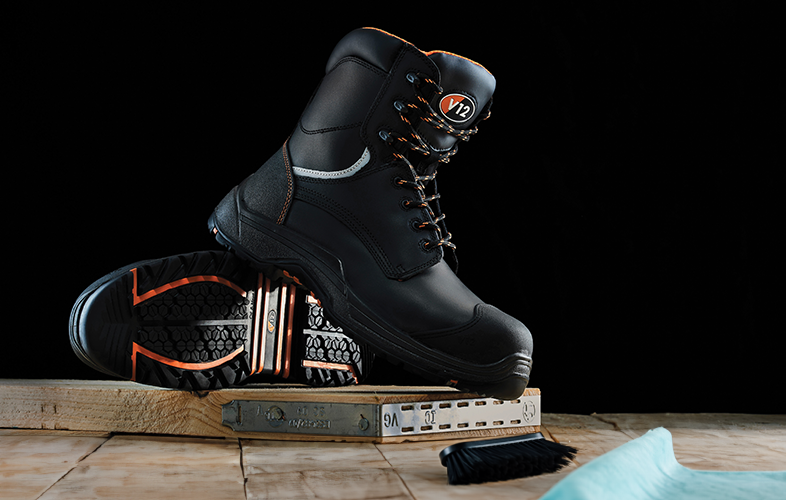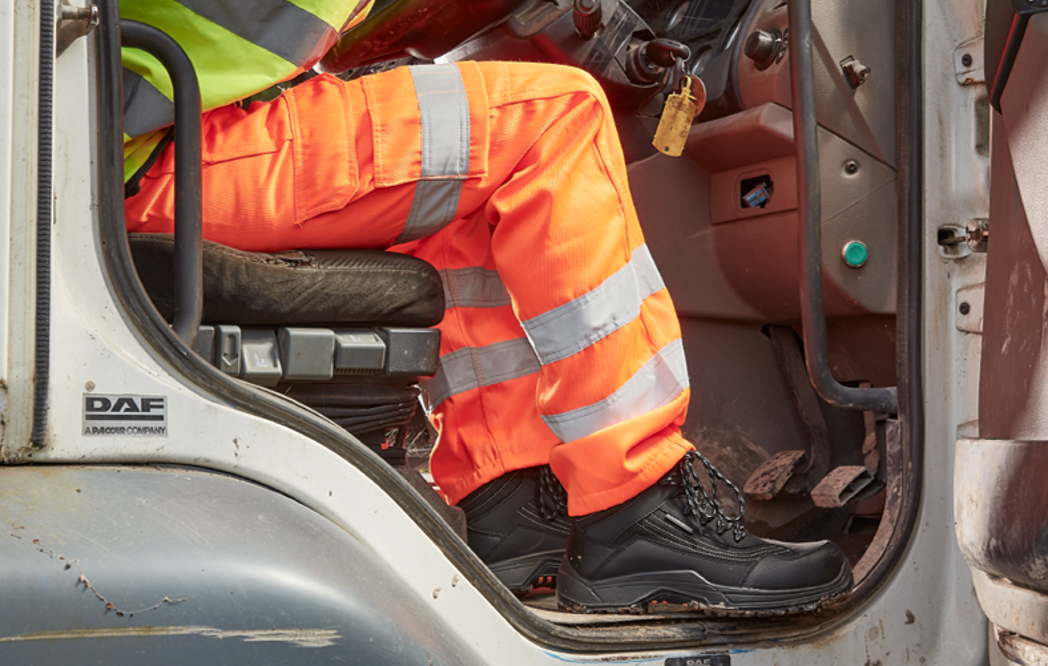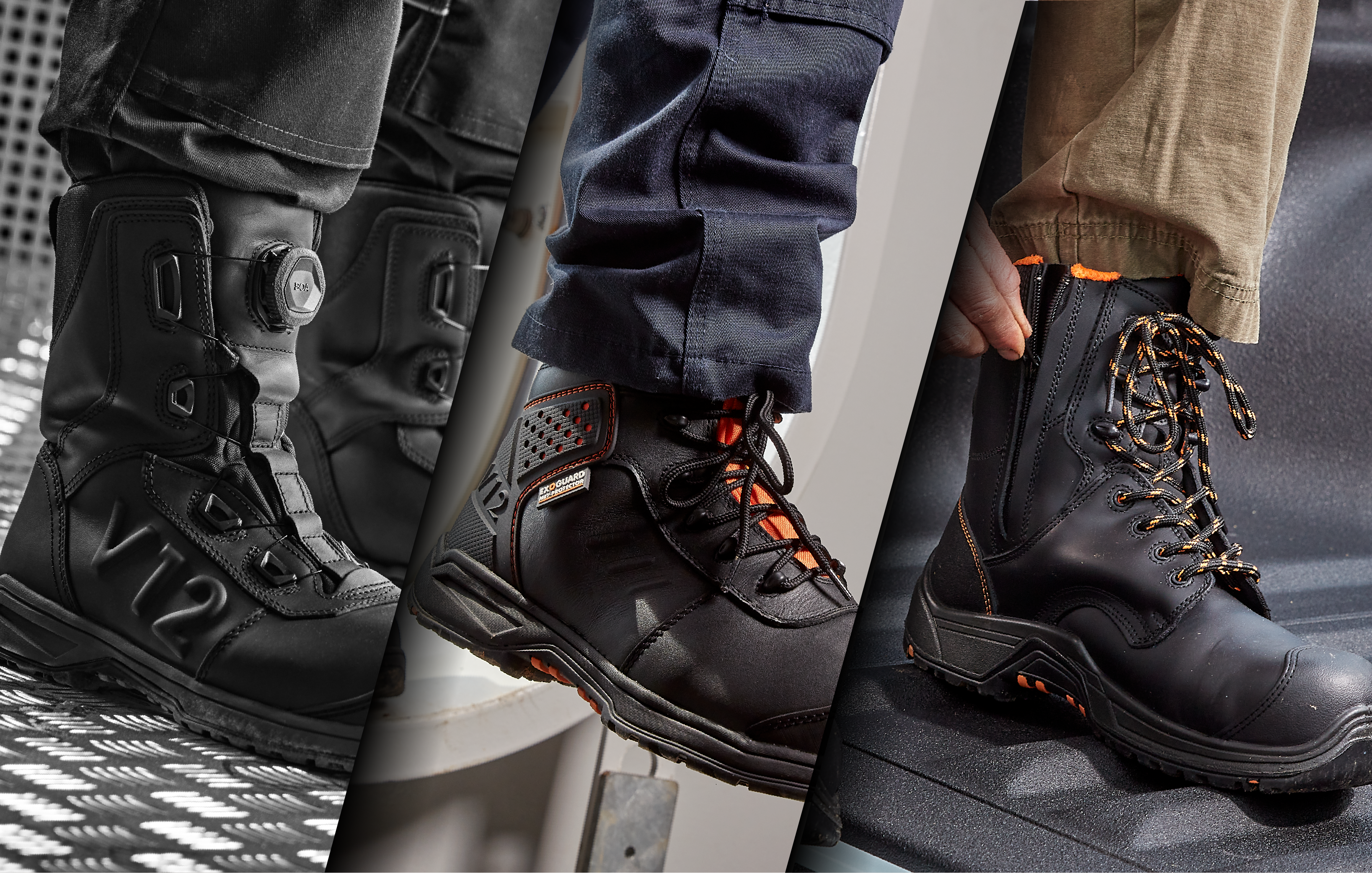When things are no longer fit for purpose, it's usually obvious, because they either stop working or begin to look different. But it's not always that easy with work boots.
In this blog, we’ll tell you how to check if your safety boots need replacing, and give you some boot care tips on washing and cleaning smooth and Nubuck leather to ensure you can look after your footwear, keeping their safety and comfort features fully optimised.
RED FLAGS
THE COMPONENTS ARE SHOWING
Protective foot guards like toecaps and metatarsal shields are not supposed to be exposed. While you might think that the upper having ripped or worn away to leave a steel or composite component exposed might not be the end of the world, it could be a serious compromise of safety. Wear, tear, scratches and knocks to a toecap can weaken or undermine its level of protection. Just think - if that dropped or fallen concrete block lands on your foot, do you want your toecap with wear and tear, or still in its wrapping?
Finally, let's face it, if you're trying to make a good impression on customers, generate future business or simply enhance the reputation of your company, holes in boots and protective guards hanging out all over the place won't look great will it?
IT'S ALREADY STOPPED AN ACCIDENT
If your safety boots have already stopped you from being injured by absorbing a heavy weight or being punctured or perforated, get it replaced. If a boot has steel toecaps, when it absorbs an impact, it usually shows a dent, but protective composite materials - which have arguably become more common than steel - don't often show any outward signs of damage, even though they could be weakened from impact. So, we recommend you always replace your safety footwear if something heavy lands on them or cuts through them.
YOUR FEET ARE HURTING
If you've been working in your boots for some time and begin experiencing issues like rubbing, blisters, arch pain or a general lack of comfort, it could be time to get a new pair of boots, as the lining or cushioning could be coming to the end of its life. Rather than looking for an estimated expiry date or average lifespan of a safety boot, your safety and comfort is a far more reliable and important measurement of whether you need a new boot.
Not so fast!
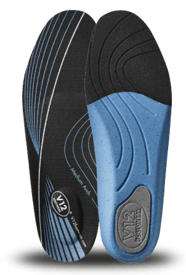 Many wearers and PPE procurers often make the mistake of buying new boots due to a lack of comfort, when it's actually a safety footwear accessory that needs changing, rather than the whole boot.
Many wearers and PPE procurers often make the mistake of buying new boots due to a lack of comfort, when it's actually a safety footwear accessory that needs changing, rather than the whole boot.
The right insole for example can go a long way to enhance comfort when in a work boot, particularly if it's an arch-supporting insole to prevent foot pain like Plantar Fasciitis.
If you feel like the padding and cushioning has gone from your boots, try refreshing your insoles - it could be a quicker and much cheaper way to bring back the comfort and bounce in your otherwise fit and healthy work boots.
Check out V12's bespoke arch-supporting Dynamic Arch insoles here.
OTHER WAYS TO CHECK YOUR BOOTS NEED REPLACING
YOUR SOLE GRIP
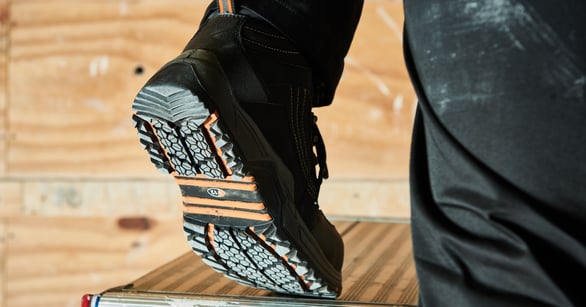 The tread on your boot is an often unseen but important safety feature, and the stats show this. Slips and trips are still by far the most common cause of accidents in the UK workplace, and so often these incidents and injuries are avoidable with the right tread.
The tread on your boot is an often unseen but important safety feature, and the stats show this. Slips and trips are still by far the most common cause of accidents in the UK workplace, and so often these incidents and injuries are avoidable with the right tread.
But if you’re an average work boot wearer who takes over 12,000 steps per day, your sole could easily be worn down unless you check it thoroughly.
You wouldn't drive with bald tyres would you? Well, the same is true of walking on a worn-down sole.
Your boots will need replacing if your tread pattern has been significantly rubbed smooth, because this will mean your boot won’t be gripping, resisting or engaging with the surface you’re walking on.
Also, examine the whole sole in detail - there are often important tread elements such as ladder grips for staying stable and slip-free at height, as well as micro-channels (smaller gaps between the sole pattern or 'lugs') which are often there to disperse water and enhance the traction for the wearer.
SEPARATION
Another way to check the health of your boots is to look closely at the places where materials meet, to see if there are signs of separation or delamination. If the rubber of your sole is separating from the upper, or your eyelets or stitching is separating from the material, it’s time you and your boots separated as well.
WASHING AND CLEANING YOUR BOOTS
Want to see our video guide on how to clean your safety boots? Watch below.
If your boots are new or are not currently showing any signs of wear, you're going to want them to stay that way. And keeping them clean with the correct tools and techniques can go a long way to lengthen their life.
POLISHED OR 'GRAIN' LEATHER
This type of 'shiny' leather is very common in safety boots, and quite straightforward to clean.
- Make sure they're dry (but don't put them next to direct heat to dry them)
- Use a large stiff brush to remove the biggest chunks of dirt and debris, paying attention also to cleaning the sole
- Use a softer brush with water to clean both the upper and the sole
- Dry and clean with a soft cloth until all dirt is removed
You can further protect the leather and add to its suppleness by treating it with Leatherfood. Click here for more information.
NUBUCK LEATHER
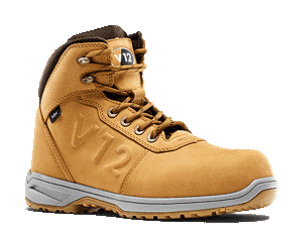 Nubuck is a type of leather that differs from the more common grain leather above, because it features a more 'napped' or suede-like finish, so it looks more fragile and feels more textured.
Nubuck is a type of leather that differs from the more common grain leather above, because it features a more 'napped' or suede-like finish, so it looks more fragile and feels more textured.
But remember, it's still leather, and this Nubuck that gives so many wearers their honey or sand construction boot is still resilient, tough and won't fall apart if you give it a good brush!
If you are worried about damaging the leather of your Nubuck boot, the main thing is to not use detergents or chemicals. You could also use a brush with rubber bristles that aren't too stiff to avoid marking the leather.
Pictured: The True Women's FitTM V2125 Lynx IGS combines style and safety with its honey Nubuck upper.
WHAT WE DON'T RECOMMEND
While it’s nice to have spotless boots, putting safety boots in the washing machine as a rule isn't something we recommend. The centrifugal force created by the machine's drum can damage the boots‘ components and certainly any electro-static properties it might have.
However, there are some safety boots on the market that are machine washable, because they will have undergone specific testing to ensure they don't degrade or colour bleed when in the wash. To find out more about these types of safety styles such as V12's machine washable Octane and Boost, read our blog here.
Tip: If you do have a pair of machine washable safety boots, ensure you put plenty of old rags in the drum along with the boots before you start - this will stop them thumping around and causing damage to the machine's bearings.
Pencil rubbers, vinegar - we've even heard of people spraying WD40 on their boots to clean them. While these methods might work for some wearers (WD40 apparently gives many wearers' boots added water resistance) we recommend simplicity. A brush, water and a cloth. Remember, leather is skin, and skin likes to be kept clean, dried - and treated gently in the process.
THE RIGHT BOOTS FOR YOU
If you're looking for your next pair of safety boots, heading to the V12 Boot Finder is the smart move. You can choose all of the safety and durability features you need from your footwear, and we’ll give you our expert recommendations from the V12 range to meet the hazards of your role and keep you comfortable on every step.

